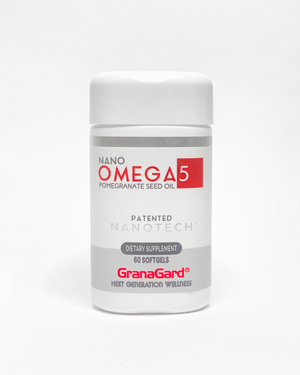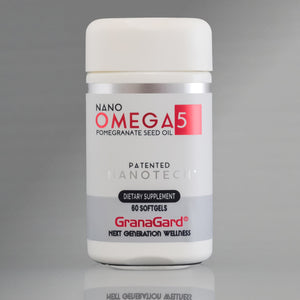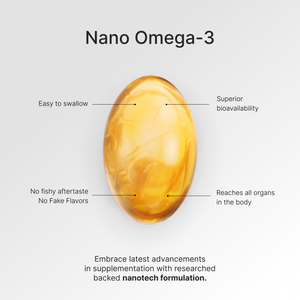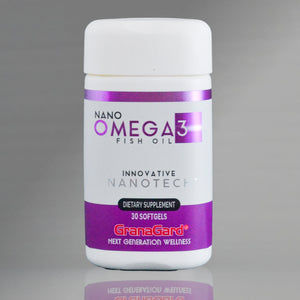It is undeniable the great benefits that physical exercise brings to health, but it could also have a negative impact, which would be given by an increase in oxidative stress. Of course, this will depend on the level of training, the intensity and duration of exercise, gender, and age of the person training. Sometimes it will be necessary to strengthen our defenses against oxidative stress with antioxidant supplements. If you are over forty, take note.
What is oxidative stress
The nutrients we ingest through the diet are converted into energy through a series of biochemical reactions inside the cells. These reactions are part of normal metabolism.
As part of these reactions, intermediate products such as free radicals, reactive oxygen species (ROS) and reactive nitrogen species (RNS) are generated, which are unstable molecules because they contain one or two atoms that do not have their electrons paired, that is, they are unpaired. To stabilize, these free radicals must “steal” from other molecules the electrons they lack (the molecule from which they “steal” will remain oxidized).
The victims of free radicals, ROS, and RNS are important biomolecules such as lipids that make up membranes, proteins that can be a receptor in the cell, a mediator, or a hormone; and the very DNA that contains all our genetic information. Oxidation causes a change in the structure of these molecules and this alters their function.
Fortunately, we have an antioxidant defense system (What are antioxidants in simple words) to counteract the production of ROS/RNS. Antioxidants are defined as any substance that, when present at low concentrations, significantly delays or prevents the oxidation of other biomolecules such as lipids, proteins, or DNA.
When the balance between the presence of oxidizing agents (free radicals, ROS, RNS) and antioxidants is broken, a condition known as Oxidative Stress (Oxidative Stress myth or reality) occurs.
Why exercise can cause oxidative stress
With exercise, energy requirements increase. To meet this demand, metabolism must increase.
It is estimated that between 2% and 5% of the oxygen consumed during normal mitochondrial metabolism (the mitochondrion is a small organelle within the cell where reactions occur) can be converted into radicals and their products. In conditions such as exercise, which demands a greater amount of energy in many tissues, mainly in the muscle, there is an increase in the use of oxygen in the mitochondria, resulting in a greater generation of radicals.
The elevation of metabolism by exercise results in a greater production of superoxide-type radicals, which are transformed into hydrogen peroxide (H2O2) by an enzyme (superoxide dismutase). H2O2, a molecule that easily crosses cell membranes. Normally this Peroxide would be neutralized by transforming it into water and oxygen through other enzymes: catalase and glutathione peroxidase that are part of our internal or endogenous antioxidants (What are antioxidants in simple words) defense system. But, when these transformations do not take place because there is no antioxidant defense, H2O2 is converted, through another reaction, into the hydroxyl radical, the most toxic ROS due to its high reactivity.
Numerous studies have shown that muscle cells also release superoxide into the extracellular space, so free radicals easily reach the blood and act on other cells.
Although the generation of free radicals during exercise occurs predominantly in skeletal and cardiac muscles, some reports have shown that the concentration of several oxidative stress markers increases immediately in plasma after intense exercise.
Why athletes are not affected by oxidative stress

A group of researchers decided to study this question with a group of healthy volunteers, who were not athletes, aged between 19 and 29 years. With them, they conducted experiments subjecting them to controlled intense exercise using a cycle ergometer, which is a device that can regulate the intensity of pedaling, measure heart rate, oxygen consumption, and other variables.
They used three intensities, but performed with a week interval between them. At the end of each exercise, a blood sample was collected in which the concentration of antioxidant enzymes in the plasma was measured. The good news is that the results showed that the concentration of antioxidant enzymes increased with exercise.
According to these results, the increase in free radical production during exercise would be counteracted by the also increased levels of endogenous antioxidants.
However, it should be considered that many studies that have analyzed the relationship between free radicals and exercise have found indirect markers of lipid oxidation; which indicates that oxidative damage did occur.
The age factor and antioxidants
The ages of the subjects in the mentioned study ranged from 19 to 29 years; but it is also known by science that the production of endogenous antioxidant enzymes decreases after the fourth or fifth decade of life.
The age factor has a determining role in the antioxidant balance, for this reason, in addition to trying to consume a diet rich in antioxidants, (What are the best antioxidant foods) if we are over 40-50 years old, we must include a good antioxidant supplement, such as the latest generation ones made with nanotechnology. (What is Nanotechnology in simple words)
Nano Omega 5 (What are the benefits of Omega 5) from GranaGard® is a powerful natural antioxidant with multiple antioxidant action mechanisms. Omega 5 has been transformed into a nanoemulsion, allowing it to dissolve in both aqueous and fatty media, thus being able to reach all the cells in our body.
If you are over forty years old and exercise frequently, help protect your body with Nano Omega 5 from GranaGard®





